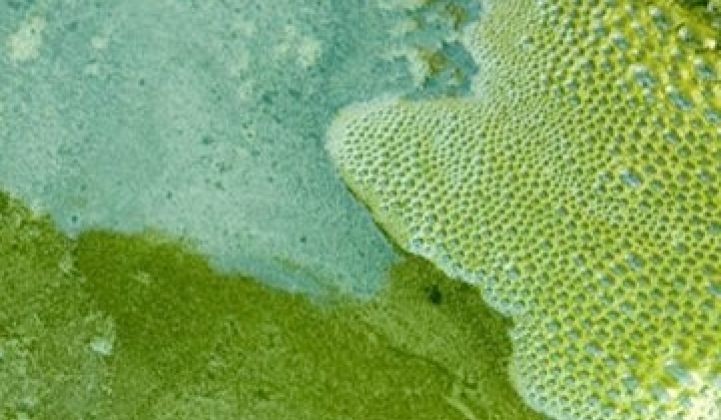The march of algae beyond the swamp continued today as Dow Chemical and Solazyme announced a joint venture to use algae to develop insulating fluids for transformers and other electrical equipment.
Under the deal, Dow may obtain up to 20 million gallons of oil from Solazyme in 2013 and 60 million in 2015. Today, 500 million gallons of dielectric fluid get sold every year -- and that doesn't even include the Christmas rush.
Algae oil is oil, after all. The North Sea oil deposits are the results of prehistorical algal blooms. Unlike most other algae companies, Solazyme does not grow algae through photosynthesis. It has created genetically modified microbes that feed on sugar in large fermenting kettles. When they get fat, Solazyme squishes them to extract the oil. Although sugar adds costs, Solazyme does not have to extract algae from water to extract the oil, an arduous, expensive process that photosynthesis companies face.
Despite the whining from some critics about the sugar part of the equation, Solazyme has actually produced far more algae fuel than its competitors. Last year, the U.S. Navy ordered 150,000 gallons of algae-based jet fuel from Solazyme after a 20,000-gallon trial.
The company was also one of the first to expand from producing fuel to making food additives, chemicals and cosmetics. Those markets, although smaller, are easier to enter. Solazyme is expected to file preliminary paperwork for an IPO soon.
DuPont, 3M and other large chemical/materials companies have been actively signing joint ventures and investing in green technology startups, but Dow is arguably more active than most. Today, stealthy solar startup Alta Devices said Dow is an investor. Dow has also put money into NuvoSun, making equipment for the CIGS industry, and is working on materials for car batteries, solar shingles, and water purification systems.
Meanwhile, Monsanto yesterday invested in Solazyme rival Sapphire Energy, which wants to grow genetically modified algae in open ponds via photosynthesis. Scientifically, that's no easy feat, but if they can pull it off it could lead to relatively inexpensive algae oil. Back in November, Sapphire told us the company would be able to show what it can accomplish with its process in about 18 months.
Here's an award-winning video on Solazyme's process.



